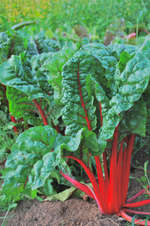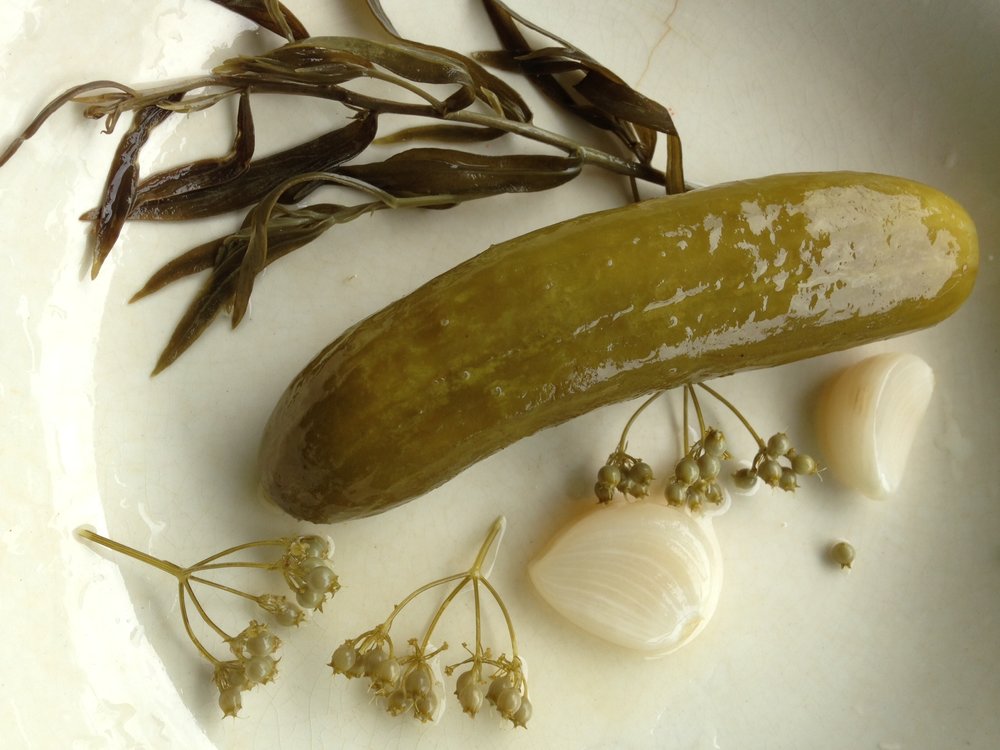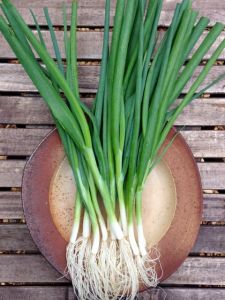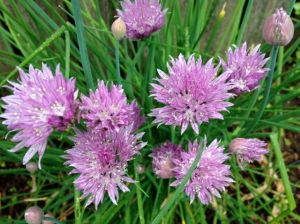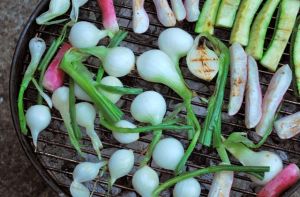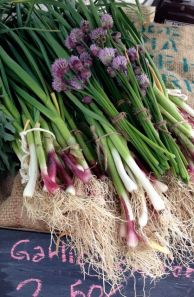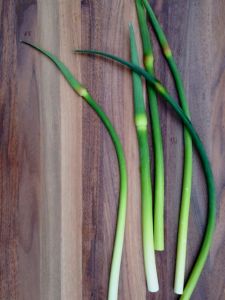Fat Of The Land - Who Is Jimmy Nardello?
Guest User
And Other Travels Through The Sweet Pepper Patch

Say the word pepper and one of two things likely comes to mind: the table shaker filled with black and gray dust, and the flamingly red and famously spicy crop we either crave or avoid, depending on our culinary disposition. Thirdly, some of our minds may drift to that molar of a fruit, glossy and green as spring grass: the bell pepper. In a typical North American produce aisle, it (and its yellow, orange, red, and purple siblings) is the sole pepper not relegated to the ‘ethnic’ produce section and the only one I tasted until a shamefully late age. ≈I grew up in the Germanic and Scandinavian influenced cuisine of the upper Midwest, but that is not an entirely sufficient explanation. Peppers, imported to Europe from the Caribbean and Central America by Columbus and his successors, spread widely through the well-established trade routes of the time, each culinary tradition choosing what they liked from the pepper’s plentiful genetic archive. Though northern Europeans are certainly not known for their peppers, they ate them, more often as dried powders (paprika) or as immature (green or yellow) fruits.
I blame my pepper ignorance on my own singular obsession with the green bell—something of an anomaly in the pepper world, their mild, watery flavor and crisp texture yields easily to nearby flavors. I used them often as a budding young cook in the few recipes I’d successfully mastered. It took a lot of practice to build the confidence needed to branch out, and until then I had no reference point for the nuance and diversity of pepper flavor, no clue at all as to what I was missing.
The first pepper that really stumped me was the Jimmy Nardello. It turned everything I thought I knew about peppers inside out, hung it to dry under an unfamiliar and illuminating sun. These skinny things, bright and lustrous red, looked like a sleeve of capsicum fire. “They’re not hot,” I was told, but my eyes, after years of dedicated chili pepper avoidance, refused to believe it. I cooked a few up, alone in the frying pan as I was instructed. Their thin walls softened quickly, their delicate skin blistered into oil-crisped bubbles, their sizzle unleashed soft, cherry-scented steam.
They were not hot. What spice they had was the citrusy kind, pinching their expansive flavor with compassionate sharpness. The rest was full-throated, candy sweetness and a quality of fruit deeper and darker than the best tomato. That enlightened moment led to many other fried Jimmies, to pickled Jimmies (my favorite), to roasted and grilled Jimmies. My freezer always has a bag of sliced raw Jimmies to add to off-season sauces and stews.
Jimmy Nardello himself would also dry his family’s now famous pepper, strung and hung in the shed for winter the way his mother, Angela Nardiello, likely taught him. Inheritor of her family’s slender red frying pepper, she brought its seeds with her when she immigrated from the southern Italian town of Ruoti to the United States in 1887. Jimmy was her fourth son and the one, if legend holds true, that was most interested in gardening. He kept the family pepper alive until he died in 1983.
Lucky for us, Jimmy shared his beloved peppers with the newly founded Seed Savers Exchange not long before his death. In the subsequent thirty-two years, they’ve become something of a cult sensation—seducing gardeners, small-scale growers, and in-the-know home cooks and chefs with their alluring set of traits. As easy and productive in the garden as they are quick and straightforward to prepare, I was not the first to be swayed by a single bite.
I have made other discoveries since then. Red bell peppers, with their diluted sweetness and juicy flesh, have nothing on the pimiento. A pepper type usually associated with Spain, these plump, round fruits (also called cherry peppers) have unusually thick walls for their size, their flavor a mix of Jimmy Nardello richness and caramelized sugar. Though they are traditionally dried and ground into sweet (or smoked) paprika, they are one of my favorite peppers to eat raw.
Then there are the roasting peppers, Italian in origin (going by the name Marconi), perfected most recently by Oregon’s Wild Garden Seed, with variety names like ‘Stocky Red Rooster,’ or ‘Gatherer’s Gold.’ Bred for oven and fire roasting, they peel with relative ease, leaving behind meaty strips of tender, delicious flesh. Northern gardeners appreciate their ability to ripen in quantity despite a climate that is not always accommodating to this tropical native.
My favorite pepper color is now red, though the realm of the sweet pepper is host to many flavorful greens. Shishito, small frying peppers with undulating walls are best sautéed whole with oil and salt, and make a delicious drinking snack. Yellow wax peppers (also called banana peppers)—looking like a pale yellow, bulked up Jimmy Nardello—are tangy and bright, good raw or cooked, though if you’re expecting something mild, don’t confuse them with their spicier look-alikes, Hungarian Wax or Pepperoncini.
I was a toddler when Jimmy Nardello died, but I get to smell his kitchen each time I fry up a batch of the slender, transcendent peppers that bear his name. I still cook green bells when a favorite recipe calls for them, though I find myself delighted more often by the more particular pepper personalities, the ones that shine like a badge of someone else’s devotion and perseverance. Through flavors we can travel, and in this endeavor, the pepper—hot or sweet—is a vehicle so precise it can deliver us to one family’s garden, terraced more than a hundred years ago at the ankle of Italy’s boot.
Sarah West is a gardener, eater and admirer of the agricultural arts. She gladly spends her Sundays as assistant manager of the Hillsdale Farmers’ Market, basking in the richness of its producers’ bounty and its community’s energy. Find archives and more at http://thefatofthelandblog.wordpress.com.
 i
i As farmers’ market shoppers, we’ve come to know many of our foods by name. Gone are the days when a tomato was just a tomato; now we want Brandywine, Purple Calabash, Oregon Star. Anonymous berries just won’t do anymore and we wait in line for Chesters, Triple Crowns, or Hoods. We make the effort to remember these names because we remember the flavors that come with them.
As farmers’ market shoppers, we’ve come to know many of our foods by name. Gone are the days when a tomato was just a tomato; now we want Brandywine, Purple Calabash, Oregon Star. Anonymous berries just won’t do anymore and we wait in line for Chesters, Triple Crowns, or Hoods. We make the effort to remember these names because we remember the flavors that come with them. has recently restarted an old tradition of public vegetable variety trials. Unlike the secretive work of seed breeders developing new (often patentable) varieties, a public trial consists of varieties already released (or near release) and its purpose is to compare attributes of similar plants. I recently attended an open field day at NWREC with a group of area growers to have a look at the crops and taste the differences. The one-acre site is planted in a patchwork of varieties and doubles as a learning garden for the center’s educational programs (including the excellent
has recently restarted an old tradition of public vegetable variety trials. Unlike the secretive work of seed breeders developing new (often patentable) varieties, a public trial consists of varieties already released (or near release) and its purpose is to compare attributes of similar plants. I recently attended an open field day at NWREC with a group of area growers to have a look at the crops and taste the differences. The one-acre site is planted in a patchwork of varieties and doubles as a learning garden for the center’s educational programs (including the excellent  This year’s trials focused primarily on the Asian specialty market, with Thai basil, leaf celery, cilantro, yu choi, and gailan. We also got to taste a selection of soon-to-be released beets from breeders at the University of Wisconsin, and still-in-development mild habaneros, a project of OSU breeder Jim Myers.
This year’s trials focused primarily on the Asian specialty market, with Thai basil, leaf celery, cilantro, yu choi, and gailan. We also got to taste a selection of soon-to-be released beets from breeders at the University of Wisconsin, and still-in-development mild habaneros, a project of OSU breeder Jim Myers.


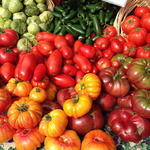
 From woodlands to meadows to marshy banks and alpine perches, the lily family is well represented among the wildflowers of our temperate region. Members of the lily clan served as important food sources for tribes throughout the Pacific Northwest long before European settlement—from the starchy staple of camas root to medicinal wild onions—and later as a source of garden specimens sent back to mainland Europe in the early days of Western exploration.
From woodlands to meadows to marshy banks and alpine perches, the lily family is well represented among the wildflowers of our temperate region. Members of the lily clan served as important food sources for tribes throughout the Pacific Northwest long before European settlement—from the starchy staple of camas root to medicinal wild onions—and later as a source of garden specimens sent back to mainland Europe in the early days of Western exploration.
